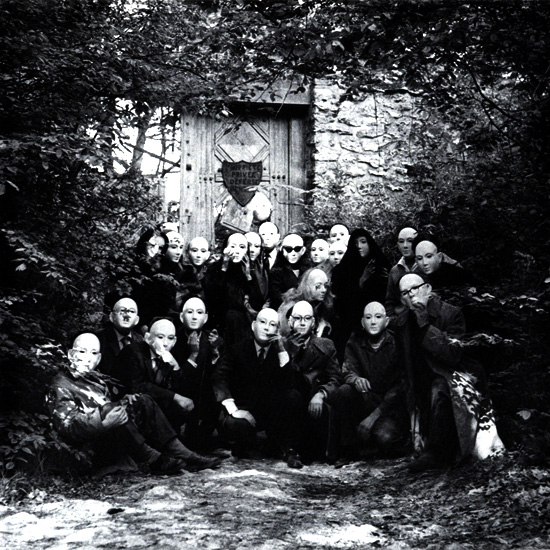
One last scanned image from Diana Ketcham's Le Désert de Retz to post here, if for no other reason than it's simply a terrific photo.
It's of André Breton and his Surrealist group, posing for photograph after “[breaking] in through the crumbling wall,” as proto-(sub)urban adventurers “enchanted by the Désert as a symbol of the death of man's intelligence by forces that are primitive, elemental, and irrational.” It would be interesting to hear what they did inside: did they enact a Surrealist play; read poetry to each other; have a picnic in honor of Manet and Seurat; play hide and seek; have sex; reenact Marie Antoinette reenacting a day in the life of a shepherdess; posed for more photos, smiling or making faces behind their death masks? Unfortunately, Ketcham doesn't give a single anecdote.
Nevertheless, it's interesting to speculate what new meanings people today in the twenty-first century will exert into the garden.
Will people again see it as “a triumph of artifice” and an “ingenious integration of the civilizing arts, as works that incorporated the techniques of painting, sculpture, architecture, horticulture, and engineering with the content of literature” in much the same way as M. de Monville's contemporaries had seen it? Will today's installation and performance artists seek new forms of expressions having realized that their methods have not only been done before but also been done magnificently?
Or will it be taken up again as a symbol of gross opulence and immorality, the same way M. de Monville's prosecutors regarded it as during the Reign of Terror? Or would people find it rather poignant and precious that it had survived largely intact, against incredible odds?
And what would M. de Monville actually think of the fact that a third of his property is now part of a golf course, which is conceptually not too dissimilar from his pastoral garden?
And what about those who had found it “a frightening place, where one ventured seeking the thrills of terror” among “its monstrous trees, its shadows, its air of isolation” — how might they now think of the politics surrounding its “rediscovery” in the 60s, the calls for its renovation, and the lawsuits that have delayed its restoration? Where before one had hoped to be enveloped entirely by the wilderness in the hopes of gaining some metaphysical insight, one now detects the mundane machinations of a bureaucracy.
The Broken Column House
A Pyramid For Serving Glaciers
Post a Comment —
Comments on posts older than a week are moderated —